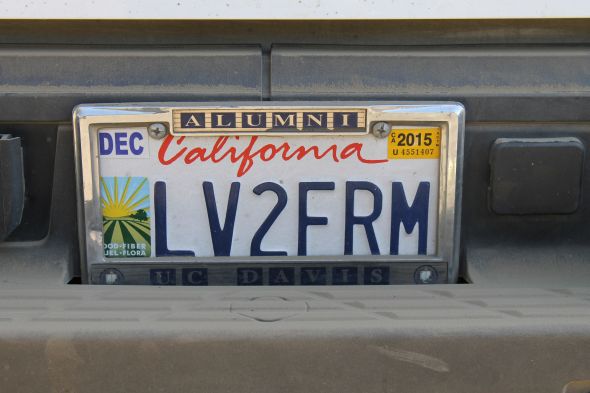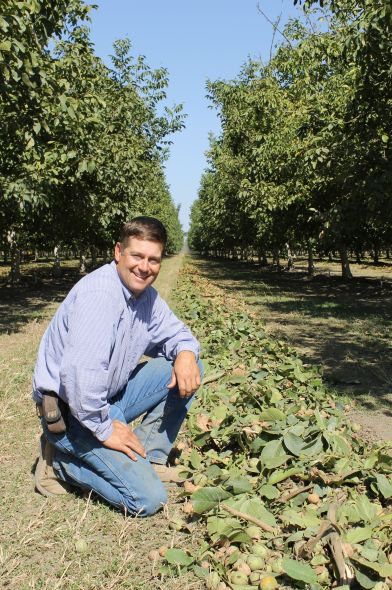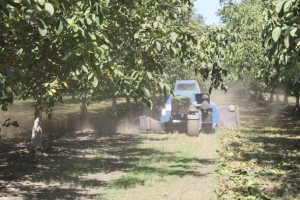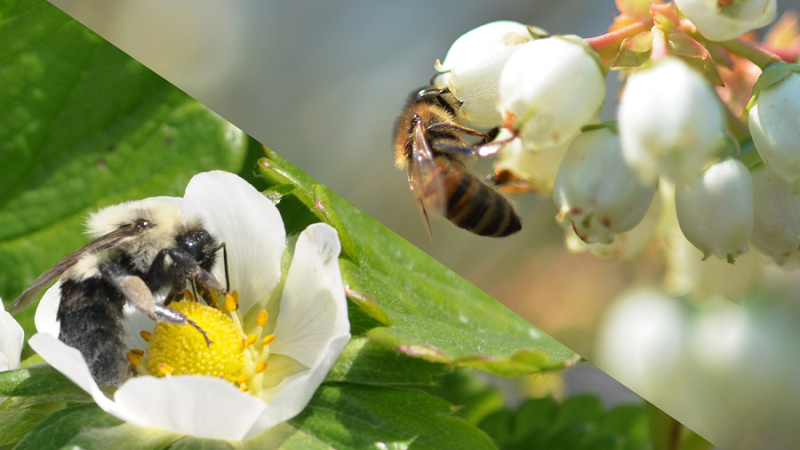GenNext Grower Staying Upbeat: Singing Ag’s Praises
While attending University of California, Davis, John Amarel met his future bride.
Shanann was a city girl, but she learned pretty quickly that if she married John, she’d have to get involved in agriculture. Farm livin’ was the place for him. Shanann made the transition, and today the couple has two children, a 12-year-old daughter and 9-year-old son.
A few years ago, she decided John might as well tell the world how he feels about agriculture, so for a Christmas gift she purchased the license plate “LV2FRM” for his pickup truck, which Amarel calls his “rolling office.”
Shanann meant that John loved to farm, but a lot of people took it another step, figuring it meant John lived to farm.
“It works either way,” he says, smiling broadly.
It also perfectly describes John Amarel’s attitude to agriculture, which is extremely positive, to say the least.
When most people email you, their name pops up in your Inbox so you can see who it’s from. When Amarel, a prune and nut grower in Northern California emails you, you don’t see his name. Just a single word, “Succeed.”
Amarel, a GenNext grower and the newest Editorial Advisory Board member of American Fruit Grower® and Western Fruit Grower® magazines, shrugs off the significance. He says that’s just the way their information technology guy set up their email system.
But it is fitting, because whether it be through diversification or a willingness to try new things, Amarel strives to succeed. Not that everything comes up a winner. In fact, the name of the business owned by Amarel, his dad Bob and their wives — Reason Farms — serves up a laugh from time to time.
Reason Farms, which is located north of Sacramento up near Yuba City, CA, stands for the initials Robert Edward Amarel and “son.” “My mom came up with that,” John says. “The joke between my Dad and me is ‘Some days we really need a reason to be out there,’ like when a tractor breaks down, or half the orchard is flooded.”
Diversifying Crop Mix
It sounds odd to say after four years of drought in California, but in Amarel’s part of the state they really do get flooding in more normal years. In fact, unlike in the San Joaquin Valley to the south, they have drains installed in their orchards to keep tree roots from drowning. But the farm wasn’t always about tree crops.
John’s grandfather started farming after doing a Future Farmers of America project on dairy cows back in 1942. He ran a dairy until the Christmas 1955 flood which killed all his cows. The family was in trouble too, and had to go up on the roof of John’s great grandfather’s house to survive. “That’s where they got plucked off the roof by a helicopter,” he says.
Deciding to work with nature, the following spring the family started farming rice. Rice was the dominant crop in the area, and is still farmed there today. At about that same time, John’s dad, Bob, graduated college and went into the military.
“He wasn’t sure what he was going to do, but home and farming called him back,” John says. “He got back in time for that year’s rice harvest, 1973, the year I was born.”
Throughout much of the 1980s the family farmed only rice. Until 1988, that is, when they first planted prunes because the rice was not profitable enough. Until 2004 they farmed 1,000 acres of rice, and 700 acres of prunes. They sold the rice ranch that year, and went completely into prunes. In 2008, they planted their first walnuts, 100 acres.

It could be “Love to Farm” or “Live to Farm.” It works either way. (Photo Credit: David Eddy)
“We needed to diversify because everything we had was in prunes,” says John.
Pretty much every year since then they acquired more land and planted more walnuts. They also converted prune ground into walnut ground. This past fall they planted almonds for the first time, 250 acres. With 280 acres of walnuts and 900 acres of prunes, they have a total of nearly 1,500 acres of tree crops, which is all they grow.
It’s Only Natural
Anyone who hasn’t had their head in the sand this year knows how the Golden State’s growers are taking heat during the drought. And no one’s taken more than their fair share than almond growers, especially almond growers planting new acreage. John Amarel fills all three bills, not that he thinks it’s a big deal. What would you say to someone without an ag background about why you are planting almonds?
“I guess I would say that there is a natural ebb and flow, that weather is cyclical, and we will have more water in the future,” he says. “New technology is allowing us to become more efficient, and we’re getting better at applying water.”
Reason Farms uses both microsprinklers and double line buried drip where applicable. And for the past half-dozen years it’s been using real-time monitoring. The walnut orchards planted in 2008 incorporated irrigation monitors in the plan.
But Amarel doesn’t think it’s water usage by agriculture per se that’s at the root of the recent bad publicity. It’s the fact that only 2% of the population is directly involved in agriculture. Interestingly enough, though, he doesn’t blame the 98% of the people not in ag.
“Agriculture is critical to the general population, and we need to communicate that better,” he says. “We’re passionate about farming, about the land, and we get to feed the world.”
It’s up to growers to get the good news about ag out, says Amarel.
“People like to talk about ag. It’s our responsibility to set the story straight, give them the right information,” he says. “I can’t tell you how many times I talk to people who say they have a relative in farming, or an ancestor, anything. They like to talk about making the connection.”
Taking The Lead
That’s what appealed to him about American Fruit Grower and Western Fruit Grower’s GenNext Growers Initiative, that it might be another means to get the good word about ag out to the general populace. In fact, before the GenNext program was launched, Amarel was a member California Agricultural Leadership Foundation class of 2007-09.

John Amarel, of Reason Farms in Yuba City, CA, during walnut harvest. (Photo Credit: David Eddy)
“Ag’s a regional thing, and everything you do you see the same people. It’s good to mix it up with others in the state because we have common ground — literally,” he says. “In ag, we all deal with certain problems, such as water, regulations and labor. Some growers in some regions or some commodities have solutions that will transfer.”
One example he offers is that of someone who was in his Ag Leadership class, and is also a GenNext grower, Garrett Patricio. What’s interesting is that Patricio isn’t even in tree crops; he is with Westside Produce in Firebaugh, CA, one of the biggest melon grower/shippers. They were in the class together just a year after the 2006 spinach/E.coli outbreak at a farm near Salinas that killed several people.
Amarel said Patricio was at the forefront of food safety, and Amarel was interested because in a prune line there is handling, and that means sanitary issues at all the driers.
“He was giving me a head’s up in terms of what would be the future requirements,” says Amarel. “What happens in one crop eventually crosses over, be it food safety, water quality or government regulations.”
Thinking Outside The Trailer
Walnut harvest is a busy time for trailers in all crops in Northern California. Not just walnuts, but rice, canning tomatoes, you name it: pretty much everything harvested requires a trailer.
So naturally there is a limited supply and they’re expensive, $20,000 for a fixer-upper double trailer, says John Amarel. That’s a pretty hefty investment for something a grower might need for only two weeks a year.

Walnut harvest at Reason Farms in Yuba City, CA. (Photo Credit: David Eddy)
One day Amarel got to talking with a cousin, who’s in the trucking business. “He said ‘What about using straight (single) trailers? They’re the same capacity as double.’”
They might have the same capacity as a double trailer, but one long trailer is much harder to turn than two shorter trailers and some hullers aren’t prepared for them. That’s why doubles are the standard in California. But Amarel checked it out, and found his huller was prepared to accept the single-longs.
Amarel then did an Internet search for trailers, where he learned of an auction coming up in Iowa. Reason Farms purchased the trailers, which went for between $4,000 to $6,000, and then paid $3,500 apiece to haul them to California.
“Even at the high end, with hauling, we still paid only half (the cost of a double),” he says. “And we’re still using them for only two weeks a year.”









